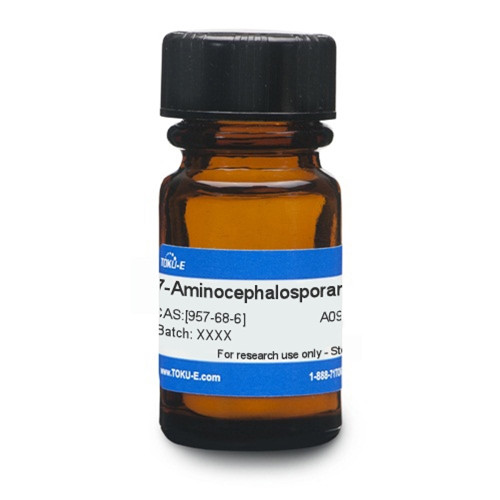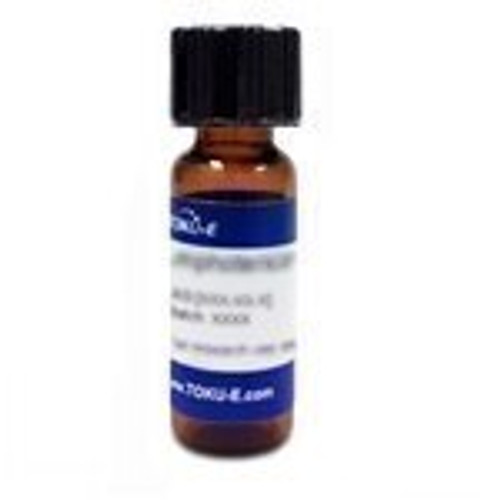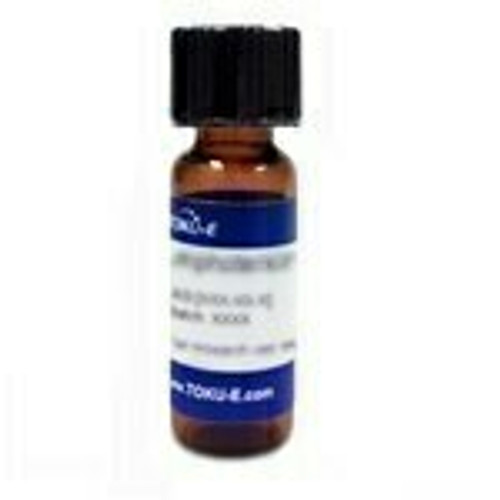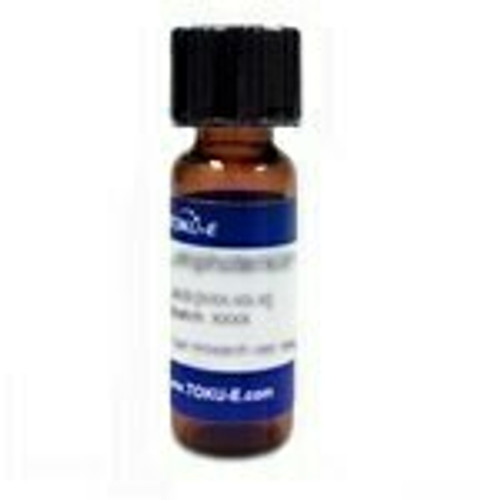7-Aminocephalosporanic Acid (7-ACA) is a key intermediate in the production of a wide variety of semisynthetic Cephalosporin antibiotics. It is an inhibitor of bacterial (S. aureus) β-lactamase. It is derived from mild acid hydrolysis of Cephalosporin C, catalyzed by GI-7-ACA acylase. Cephalosporin C was isolated in 1950 from Cephalosporium. 7-Aminocephalosporanic Acid can be used as a starting material to synthesize semi-synthetic cephalosporin antibiotics and their intermediates.
7-Aminocephalosporanic Acid is insoluble in water and DMSO.
| Application | 7-Aminocephalosporanic Acid can be used as a starting material to synthesize semi-synthetic cephalosporin antibiotics. |
| Mechanism of Action | 7-Aminocephalosporanic Acid interferes with bacterial cell wall synthesis. |
| Cancer Research Applications |
The in vitro effect of 7-ACA on the anti-viral immune response. 7-ACA suppressed the production of of virus specific cytotoxic T-cells and the proliferation of lymphocytes in a dose-dependent manner (Heugin et al, 1986). |
| Molecular Formula | C10H12N2O5S |
| References |
Bianchi D, Bortolo R, Golini P, and Cesti P et al (1998) Enzymatic transformation of Cephalosporin C to 7-ACA by simultaneous action of immobilized D-amino acid oxidase and glutaryl-7-ACA Acylase. Appl. Biochem. Biotechnol. 73: 257 Heugin AW, Cerny A, Zinkernagel RM, and Neftel KA (1986) Suppressive effects of B-lactam-antibiotics on in vitro generation of cytotoxic T-cells. Int. J. Immunopharmacol. 8(7):723-729 Loder B, Newton GGF, and E. P. Abraham EP (1961) The Cephalosporin C nucleus (7-Aminocephalosporanic Acid) and some of its derivatives. Biochem. J. 79(2):408-416 PMID 13763020 Morin RB, Jackson BG, Flynn EH and Roeske RW (1962) Chemistry of cephalosporin antibiotics. 1. 7-Aminocephalosporanic Acid from Cephalosporin C. J. Am. Chem. Soc. 84(17):3400-3401 |








